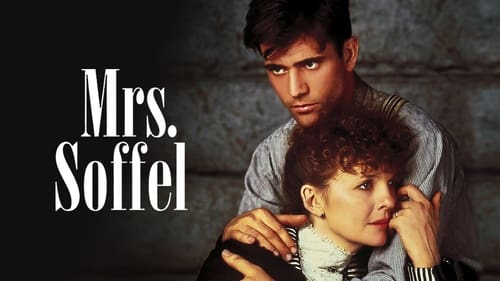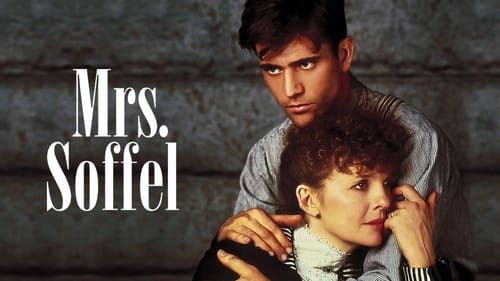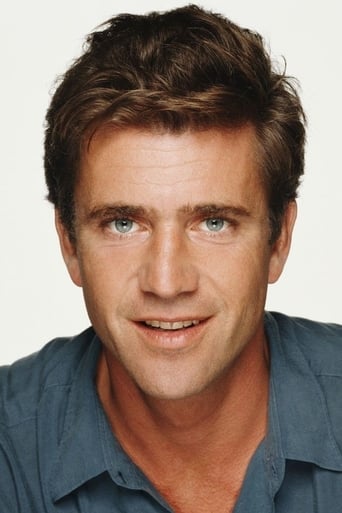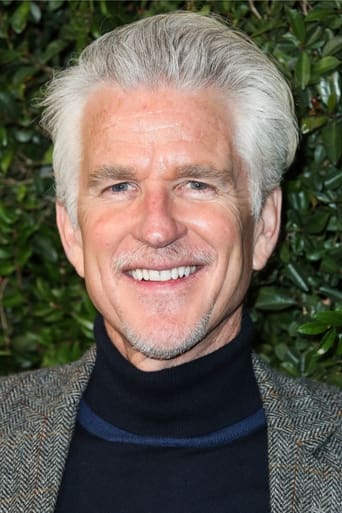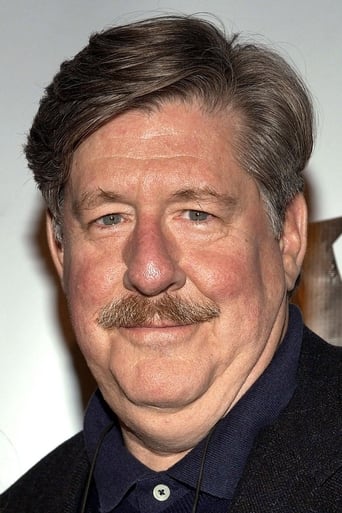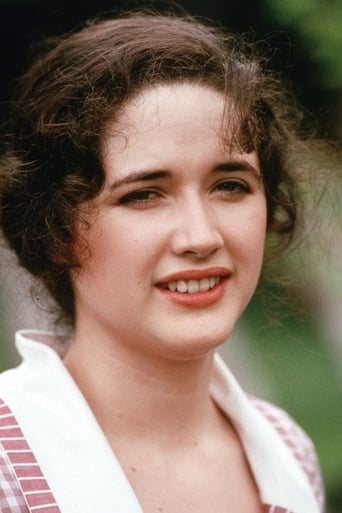Spoonatects
Am i the only one who thinks........Average?
Hayden Kane
There is, somehow, an interesting story here, as well as some good acting. There are also some good scenes
Verity Robins
Great movie. Not sure what people expected but I found it highly entertaining.
Janis
One of the most extraordinary films you will see this year. Take that as you want.
George Wright
Mrs. Soffel is one movie with a fine cast that I missed in the 1980's so when I saw this move as a $2 DVD, I snapped it up. It is a period drama and romance with interesting sets depicting Pittsburgh in 1901 and the prison for death row brothers, Ed and Jack Biddle. They are befriended by Diane Keaton, as Mrs. Soffel, the well-meaning wife of a prison warden played by Ed Hermann. The Biddle brothers are Mel Gibson and Matthew Modine as Ed and Jack Biddle. They are likable and good-looking and far from the image of hardened criminals, thus winning the hearts of working people, women especially. Mrs. Soffel is a Christian activist, who visits them with Bibles in hand trying to comfort them. She is a bright, middle class woman with a hard-working, responsible husband and three children. But Mrs. Soffel, who suffered from depression, is not content. Diane Keaton portrays a woman of her time who wants to go beyond her comfort zone and live a meaningful life. Thirty eight at the time of the movie, Keaton's age is about right to portray Mrs. Soffel, who is reaching middle age with her children getting older but she is a passionate woman whose own husband is focused on his career. Mrs. Soffel falls deeply in love with Ed Biddle. No small matter for a woman of her time. Both Diane Keaton and Mel Gibson were clearly chosen for their star appeal. Gibson is 10 years younger at 28, so this makes the romance more scandalous for the early 1900's and possibly titillating for a modern audience. As a period drama, it falls short because the romance gets the upper hand. Nevertheless, the prison sets, the on-location train travel and views of the horse drawn sled in the countryside are quite effective. I did like Matthew Modine as Jack Biddle, the less mature but more fun-loving younger brother. Mel Gibson cares deeply for his brother and wants him to be spared the noose; he feels it's his fault. He also is the true romantic who falls head over heels for Kate, Mrs. Soffel, writing poems about her and showing as deep an affection as he can behind the bars that separate them. Ed Hermann gives a good performance as Mrs. Soffel's husband, a man who performs his roles as husband and father, while awkwardly carrying on as prison warden.
laurraine
I skimmed the other comments before writing this one in case I'd missed something, but I think my initial lukewarm reaction to the film, which I saw on Turner Classic Movies, is the one I'll stick with.I tuned into this movie because of Mel Gibson and also because I also happen to like Matthew Modine and Edward Hermann.One commenter said something about the director liking strong female characters, but I didn't see Mrs. Soffel as being strong. Yes, she was unfortunate to be born at a time when women were basically seen as appendages to men. Her husband was not terribly understanding. As the movie opens, she is ill. Then she seems to undergo a miraculous recovery after being bedridden for months. My interpretation of this is that she had probably been suffering from a depressive episode. Yes, Mrs. Soffel is weak. Instead of doing something positive to stir her out of her situation, she falls prey to a criminal, who, admittedly, may not have been all bad. I suppose she had formed some sort of romantic image of Ed Biddle. And perhaps he also had a romantic streak. Both characters are shown to be not at all realistic in the way they see life.I also found the film rather slow-moving, especially at the beginning. I almost stopped watching. Overall I found, though there were some touching emotional moments, especially at the end, that the movie lacked much of a plot and the characters lacked depth. With such a weak script, I think it would be difficult for me to see much for the actors to have worked with and cannot praise their performances. I wouldn't consider the movie to have been a complete waste of my time, but I couldn't really recommend it.
ecjones1951
"Mrs. Soffel" is a wonderful movie I have seen many times, but the last viewing was so many years ago I'm watching it right now on TCM.I'm a sucker for movies whose main characters suddenly, inexplicably make a decision which goes against everything they seem to embody, or at least that which the viewer has come to know about them. That Kate Soffel's story is a true one makes it all the more intriguing.In early 20th-century America, the lot of a wife, even that of a well-to-do-man and mother to lovely children, was a lonely, empty, barren existence. In a wealthy household with servants, there was very little meaningful work for the mistress of the house to do every day.Even the layers upon layers of clothes Victorian women wore served no practical purpose except to restrict movement and render their wearers merely decorative. Express your opinions and you got packed off to visit relatives in hopes that maybe the change of scenery would "do you good." There were millions of avenues for creative expression and enterprise that were simply cut off for women.Good minds went to waste. Souls shriveled and died.Kate Soffel (Diane Keaton) was the wife of a prison warden in Pittsburgh at the turn of the last century. She served as something of a missionary to the prisoners, giving them Bibles, holding prayer readings with them and hoping to guide them towards remorse and redemption. She never expects to fall in love with one of the inmates. But fall she does, for the charming Ed Biddle (Mel Gibson), who along with his brother Jack, (Matthew Modine) are in jail on murder charges.Kate is suffocating; the Biddles are desperate. Prone to fits of melancholy and depression, plagued with fears that she is not a good mother and that she has failed her husband -- whom she has come to learn she really doesn't know very well -- Kate, like so many women of her era, is desperate for something to end the tedium, the frustration, the despair. She is a perfect candidate for the dangerous voyage she helps plan and sets out on with the Biddle brothers."Mrs. Soffel" raises many ethical and moral issues, among them the divergent path Kate takes from her religious teachings, and the Biddle brothers' guilt or innocence. It can be appreciated equally on one or more levels, but it remains a remarkably restrained depiction of emotions and passion that are anything but.
Rigor
This is one of the best American films of the 1980's. It is based on the true story of the wife of the Allegheny County Jail warden, Kate Soffel (Diane Keaton) who falls in love with a sexually alluring working class inmate, Ed Biddle (Mel Gibosn) in turn of the century Pittsburgh and plots to help him and his brother, Jack (Matthew Modine) escape. Director Gillian Armstrong and screenwriter Ron Nyswaner brilliantly decided to deal with the story in an elliptical and indirect way. We aren't telegraphed anything. We don't know if the Biddle's are innocent. We don't really understand why Kate falls in love with Ed. We aren't directly told why Kate is so disappointed in her life. The filmmakers takes this personal story and turns it into a progressive feminist mood poem. It is extraordinary to see a post 1970's American film this complex and this progressive. Diane Keaton gives a remarkably complex and nuanced performance. The film is almost unimaginable with her in the leading role. Early in the film she communicates the torment and longing of Kate in a way that warrants comparisons with the greatest acting of the silent cinema. We see the depression and desperation in Kate's face in a way that rivals Maria Falconetti in Dryer's THE PASSION OF JOAN OF ARC and Lilian Gish in Victor Sjöström's THE WIND and D.W. Griffith's BROKEN BLOSSOM'S. One of the remarkably subversive aspects of the film is its relationship to Kate's Christianity (which becomes particularly pointed watched in the contemporary context and thinking about Mel Gibson's PASSION OF THE Christ fundamentalism). She is a bit scary creeping about the prison trying to sell doomed men on a faith that will set them free. The suggestion is that it is this same faith, or more precisely the way Christianity is used as a structuring device of patriarchy, that has trapped Kate into her own life sentence. When she becomes aroused by Ed everything shifts, she looks different, some kind of remarkable radiance shines forth from Keaton's face. Her bible lessons become a pretext for sexual release. She literally makes love to Ed through the bars with his brother nearby, which adds a remarkable charge of voyeurism to the proceedings. Mel Gibson has never been photographed more sensually then in this film. There is a scene late in the film, in which, he is lying in bed with the sunlight playing on his face that in which his beauty is almost angelic. He's photographed and contextualized the way male directors have often shot young classically beautiful women (think of Julie Christie in David Lean's Dr. ZHIVAGO, Joseph Losey's THE GO BETWEEN, or Donald Cammell's DEMONSEED or Faye Dunaway in Roman Polanski's CHINATOWN or Sydney Pollock's 3 DAYS OF THE CONDOR). Armstong also allows Gibson's sense of humor to peek out to suggest layers to this character. We never totally trust Ed, yet we root for him or at least root for Kate's vision of him.The cinematography by Russell Boyd is exceptionally original and the production design emphasizes the grimy oppressive nature of an industrial town. this was actually a critique of the film at the time of its release. It was too dark, mainstream reviewers said. Well actually its historically accurate. Pittsburgh was so soot filled and grimy that the street lights had to stay on all day long! This is the great environmental tragedy of the industrial revolution. Armstrong uses this look for strong dramatic effect and creates a kind of mood poem here that reminds me of the best work of Antonioni and of Werner Herzog remarkable NOSFERATU. Like in that great film we can never quiet situate ourselves, the oppressive dim look of the film suggests we might be in a kind of waking nightmare. Is the environment part of Kate's psychic and physical affliction? Who could be happy or healthy living in this kind of relentlessly dismal environ? When we finally leave Pittsburgh Boyd and Armstrong present us with some of the most lovingly photographed images of sun and snow in American cinema. The viewer so ready for these brighter images that they alter our the way we connect to the story. That this film was neither a critical nor a commercial success is a tragedy for the contemporary Hollywood cinema. Its failure became one of the many excuses for the overwhelming turn to the banal cookie cutter cinema that Hollywood is known for today. One hopes that cinephiles everywhere will reclaim ambitious films like MRS. SOFFEL as an example

